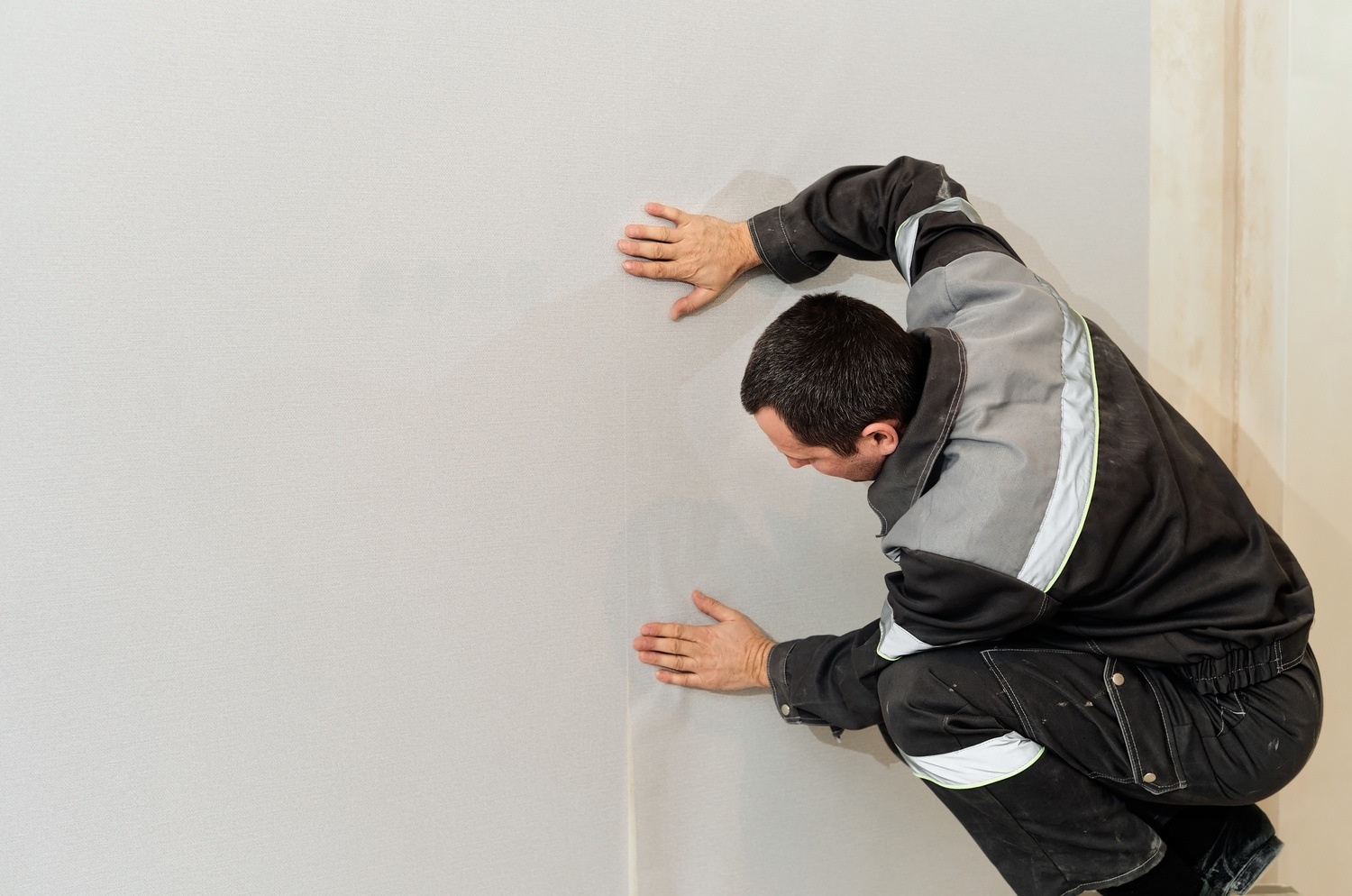Can you wallpaper over a sound absorber?
Wallpapering over sound-absorbing material is possible, but it requires the right materials and techniques to both preserve sound absorption and achieve an aesthetically pleasing result. Sound-absorbing materials are porous and flexible, which makes them effective at reducing reverberation and noise. However, covering them with the wrong type of wallpaper can impair their acoustic properties.
Successful wallpapering on a sound absorber requires a balanced approach that preserves both aesthetics and function. Here we go through what you should consider before applying wallpaper to a sound-absorbing surface.
Challenges of wallpapering sound absorbers
Sound absorbers are designed to capture and dampen sound waves through their open and porous structure. Applying a surface layer that blocks sound waves from reaching the absorber can significantly reduce its effectiveness. Some of the most common challenges include:
Adhesion and stability
Sound-absorbing materials can be soft and flexible, making it difficult to apply wallpaper evenly without getting bubbles, creases, or unevenness.
Reduced sound absorption
Dense wallpaper can clog the pores of the absorber, reducing its ability to absorb sound waves.
Material durability
If the wallpaper does not adhere properly, it can come loose over time, creating both aesthetic and functional problems.
To avoid these problems, choose the right type of wallpaper, adhesive, and possibly a reinforcing surface to support the sound absorber and wallpaper.
What type of wallpaper works best on a sound absorber?
Not all wallpapers work equally well on sound-absorbing materials. To preserve the acoustic effect, you should choose a breathable and lightweight wallpaper that does not completely block sound waves. Most suitable wallpapers:
Micro-perforated wallpaper
Has small perforations that allow sound to pass through, which means that sound absorption is partially preserved.
Thin, breathable wallpaper
Lighter wallpapers that do not form a dense barrier are a better option than heavy vinyl wallpapers.
Acoustic textile wallpaper
Some textile wallpapers are specially designed to work with sound-absorbing materials and can be a good alternative.
Wallpaper to avoid
Vinyl wallpaper and thick, dense wallpaper
These completely block the absorbent and significantly impair sound absorption.
Hard paper wallpaper
Can be difficult to attach to a flexible surface without creating bubbles.
For best results, test the wallpaper on a small area before applying it to the entire sound absorber.
How do you get wallpaper to stick to sound absorbers?
Since sound-absorbing materials are often soft and porous, wallpaper adhesion can be challenging. Here are some solutions for achieving an even and durable result:
Use a thin, perforated fabric as a backing
If the sound absorber is too soft, a stabilizing fabric or thin board can be applied between the absorber and the wallpaper. This provides a smoother surface without completely blocking sound absorption.
Choose the right wallpaper adhesive
A high-quality, strong adhesive suitable for porous surfaces will help the wallpaper adhere better. Avoid water-based adhesives, which can be absorbed by the sound absorber and cause unevenness.
Apply adhesive to both the wallpaper and the substrate
By applying adhesive to both the wallpaper and the absorber, you can create a stronger bond and prevent the wallpaper from coming loose.
Even pressure distribution during installation
Avoid pressing too hard, as this can deform the sound absorber and reduce its effectiveness.
Alternative solutions for combining aesthetics and sound absorption
If the goal is to combine sound absorption with an aesthetically pleasing surface, there are more options than traditional wallpapering:
Fabric-covered sound absorbers
An alternative to wallpaper is to choose sound absorbers with an integrated fabric surface, which provides a softer and more stylish look.
Painting with acoustic paint
Some specially developed paints have sound-absorbing properties and may be a better alternative than wallpaper.
Decorative acoustic panels
Instead of wallpaper, you can use acoustic wall panels in different colors and patterns to create a visually appealing and functional solution.
By choosing the right method and materials, you can both improve the sound environment and maintain a stylish interior without compromising sound absorption.






